Dave Plummer, a former Windows engineer who you may know from his YouTube channel Dave’s Garage, recently tweeted the following:
If I had a LinkedIn bio, I'd definitely mention that I wrote the Windows Start Menu.
— Dave W Plummer (@davepl1968) July 14, 2024
Well, the non-resume version is that I wrote the code that custom-paints the Start menu, draws the sideways text, background gradient, and so on. It had been done with a Bitmap in Windows 95, but for WindowsNT that would mean doing it in N languages for V variants of server, workstation, and so on. That would be a lot of bitmaps with text in them.
I wanted to render it live.
There's probably a way to render text sideways now, but there wasn't at the time. Fortunately, with NT, unlike 9x, you could rotate the device context itself. I'd only been coding for Windows a few months at that point, so it was cool to discover it was even possible. I tried a quick test and it worked!
I used standard GDI calls to render the background gradient, which fades blue-black like the sky on the NT box, then fill anything past that with solid black.
And now you know how the start menu draws :-) pic.twitter.com/QgQqhSFi8w
Well, that’s interesting! It might seem like nothing these days - of course you can procedurally draw rotated text, why not? But you have to remember Windows NT 4.0’s minimum system requirements are a 486 at 33 MHz, 16 MB of RAM, and just any VGA graphics card that makes pixels appear on the screen. (VGA here refers to the 1987 IBM PC standard of 640×480 with 16 colors, not the “modern” VGA, specified by VESA, that stretches as far as 2048×1536 with 24-bit color.) The Graphics Device Interface (GDI) library’s performance was dramatically improved in NT 4, so it could plausibly make sense that even the lowest-end systems could draw the gradient and text very quickly. After all, Windows 95 with its minimum spec of 4 MB of RAM managed miracles such as drawing your desktop wallpaper - at 16-bit 1024×768, that would require about 1.5 MB, which could already be well in use by other programs.
In Dave’s tweet, and subsequent YouTube video, he mentions that Windows 95 simply had a pre-rendered bitmap of its Start menu banner logo embedded into explorer.exe. Indeed, you can find this bitmap pretty easily using a copy of Windows 95, 98, or Me, and a tool such as Resource Hacker:
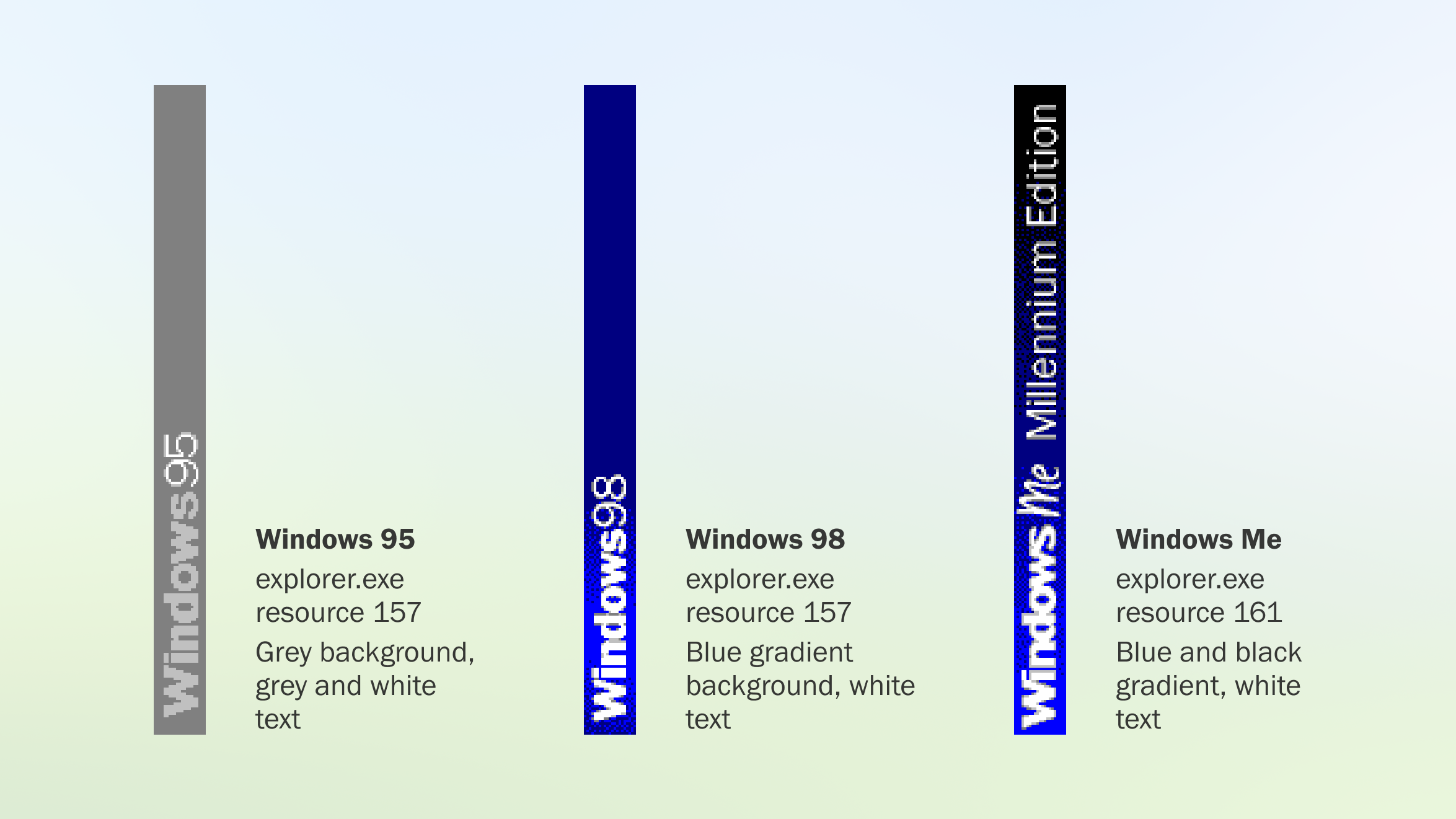
And if we go past NT 4, to 2000, XP, Server 2003, and Vista (the classic Start menu was removed in Windows 7), we can also see that the banner is a bitmap:

Ok, that’s a lot of editions (and I didn’t even include all editions of XP). Maybe they decided rendering with GDI at runtime didn’t make sense, so they went back to bitmaps.
The two key claims Dave makes about NT 4.0 are:
- NT 4.0 comes in many editions, so there are already multiple brand names to consider.
- Each language release of NT 4.0 needs its name localised.
Starting with the first claim, we can easily confirm that it appears to be incorrect.
The final release of NT 4.0 (and all service packs) only contains two banners: Workstation, and Server. There are also two later releases of NT 4.0 - Terminal Server and Embedded. Terminal Server simply overwrites the Server resource with the Terminal Server name, and Embedded adds a new resource. Amusingly, “Embedded” seems to have two nearly invisible letters: “Ed”. Maybe it was originally “Embedded Edition”?
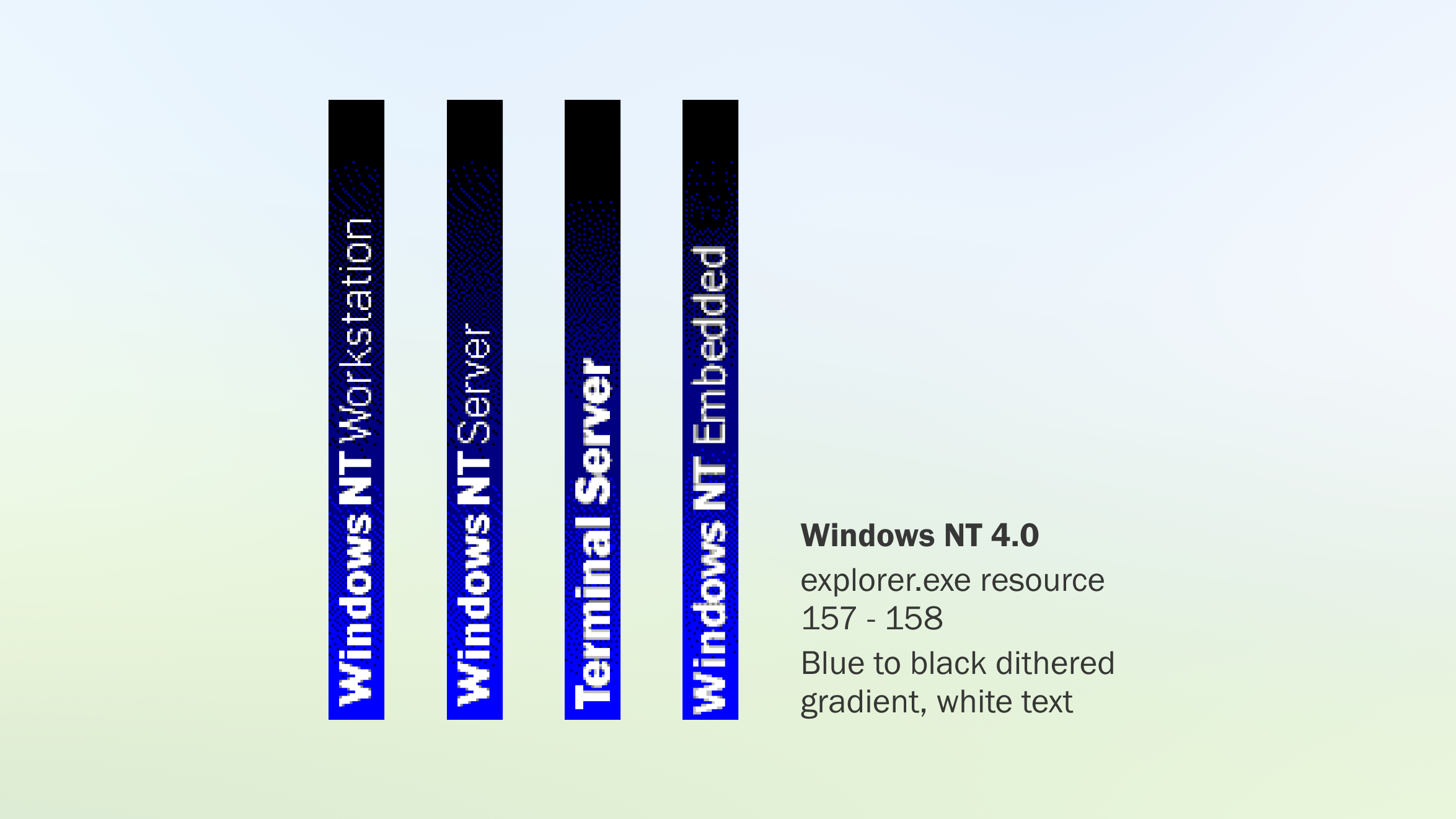
Well, this still just doesn’t seem right. There must be some situation where the bitmaps are ignored, and a graphic rendered at runtime is used instead.
I poked at a copy of Windows NT 4.0 Workstation in Italian, and found the exact same bitmaps with English text. Maybe the bitmaps are just there for some compatibility reason?
So I installed this copy, and found the exact same English-language bitmaps.
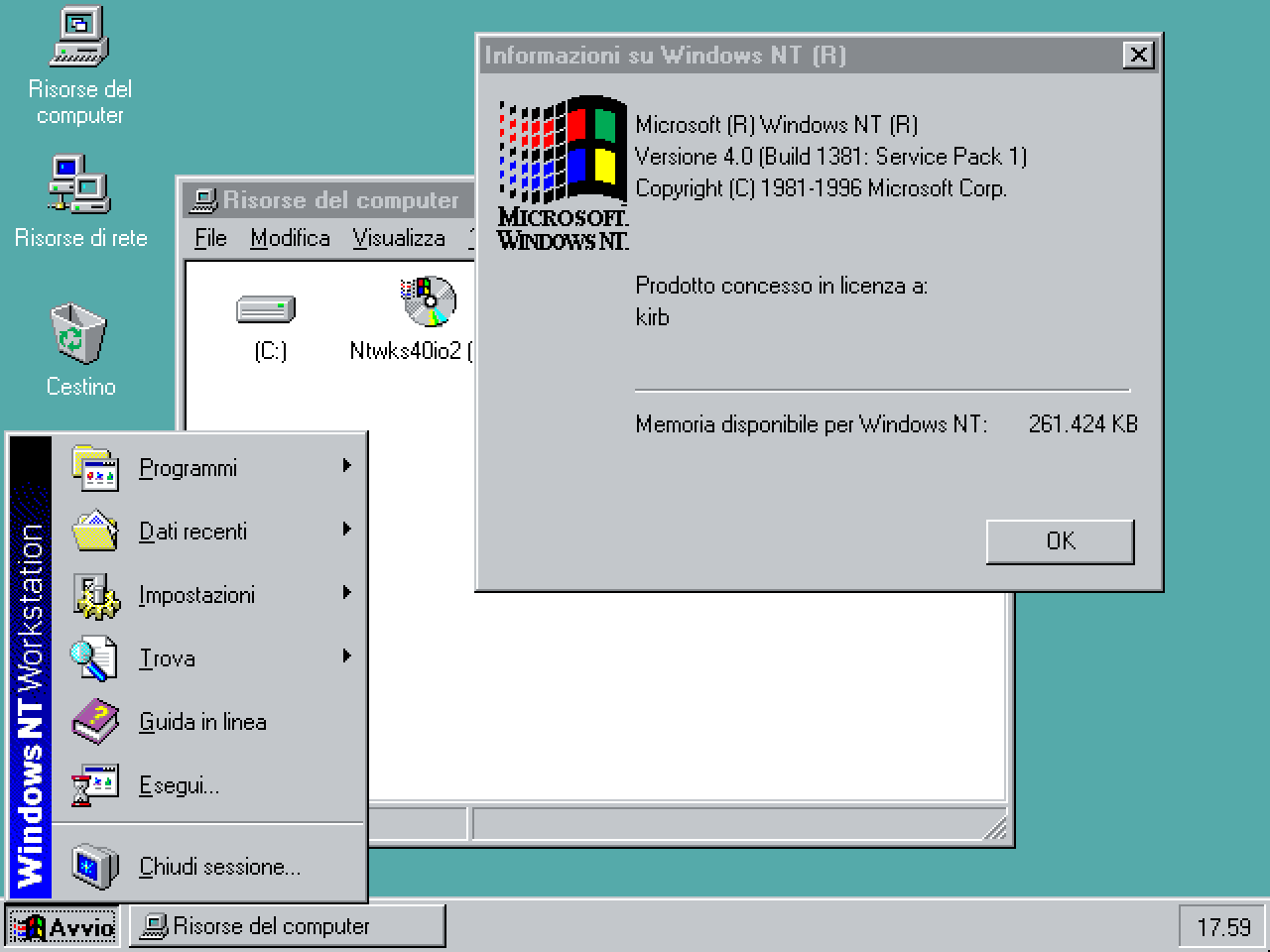
Nope - the branding stays identical. What about Server in Spanish?

Hm. English and other European languages were part of the initial release of NT 4.0. Chinese, Japanese, and Korean (CJK) were released later. Maybe it was added later to handle those languages. So let’s try Simplified Chinese Server.
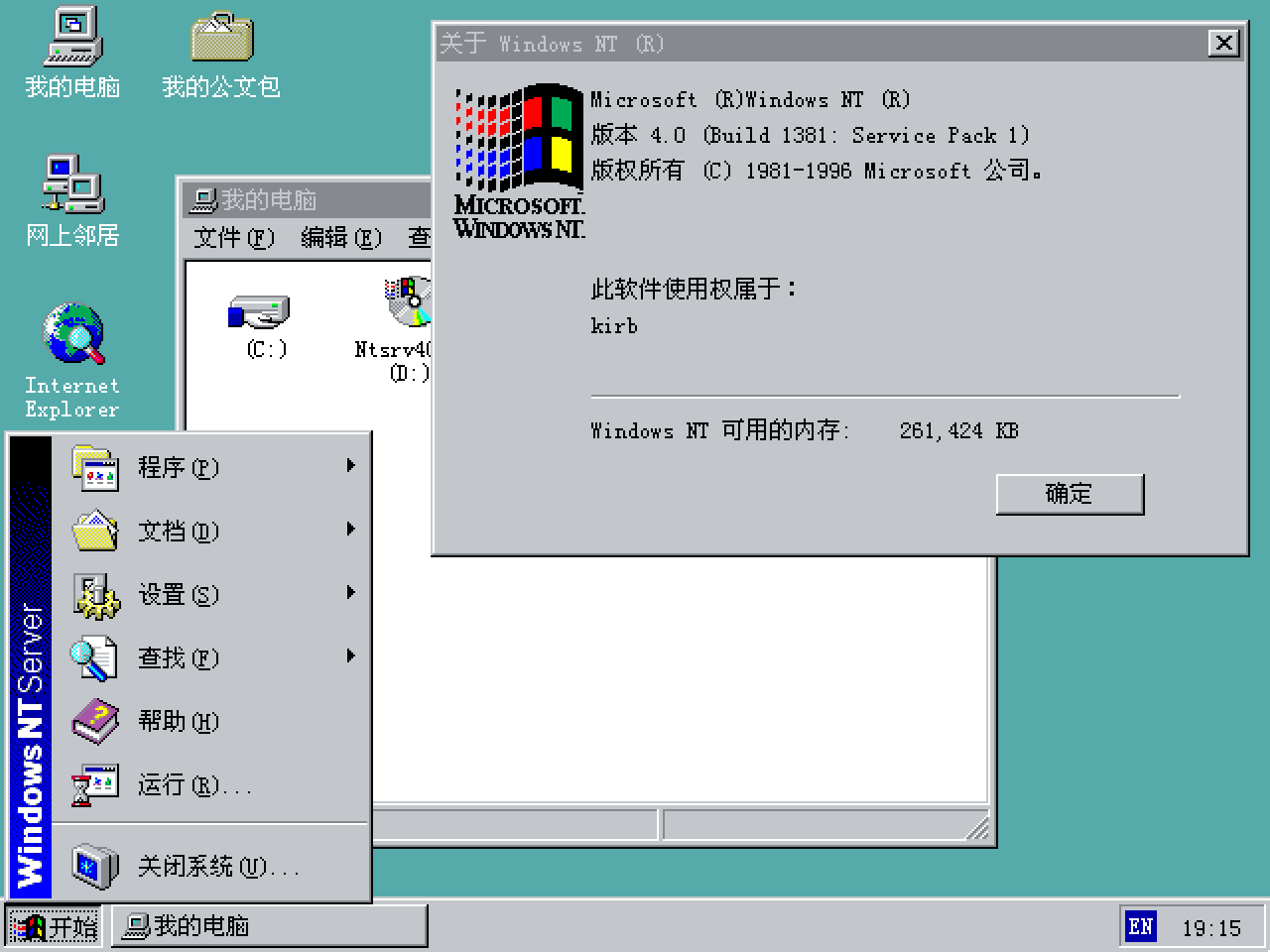
Let’s go for broke then - Japanese Enterprise Server.
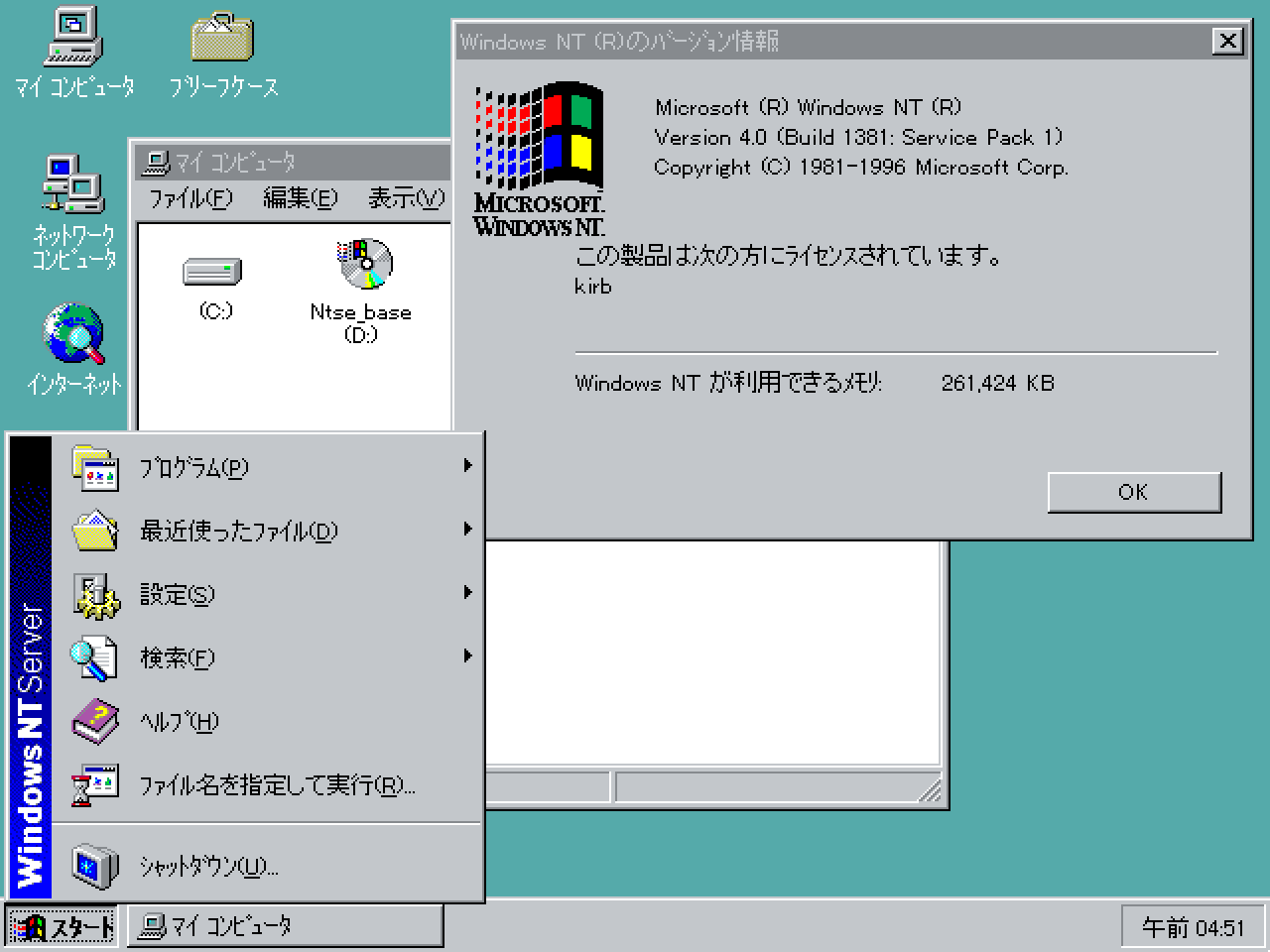
At this point we’ve confirmed that, in released builds of NT 4.0, the Windows branding doesn’t change with localisation, in fact rarely changes with the specific edition of the operating system, and no procedural rendering is being done.
That leaves one more theory - was the bitmap originally procedurally generated in NT 4.0 betas, and then, later, it became the two Workstation and Server bitmap resources?
Let’s turn back the clock to the development of Windows 95, the first time the Start menu, taskbar, and Explorer (the “shell”) were implemented in a capacity more than just a proof-of-concept. Alongside the MS-DOS-based versions of Windows, Microsoft were simultaneously working on Windows NT. There was some clear excitement for the Windows 95 redesign, and therefore demand for it to make its way to Windows NT. The project porting the Windows 95 shell to NT was named the Shell Update Release (SUR), and it was released as Windows NT 4.0. Microsoft also developed and released the Shell Technology Preview (aka NewShell), allowing an early build of the port to be tested on NT 3.51.
In the earliest leaked build of the Shell Technology Preview, 3.50.854, the banner says “Windows 95” on a grey background, almost identically to the banner found in Windows 95, but in what appears to be a Helvetica-alike font such as Microsoft Sans Serif, rather than the Franklin Gothic font used by the Windows brand between 95 and XP. By the time STP reaches its official preview release (of which two builds were released), the graphic is changed to say “Windows NT Explorer” on a bright blue background.
This NT Explorer graphic also appears in early leaked pre-beta builds of NT 4.0. In Beta 1, the bitmap changes to a grey gradient with a condensed font, also adding the edition of NT, “Workstation” or “Server”. It also has some random color sparkles. The final graphics appear in Beta 2, with a dithered blue to black gradient, and the correct brand font for “Windows NT”.

Finally, leaked source code of presumably RTM or a post-RTM release of NT 4.0 does not appear to contain any code to render the banners with GDI. The only code that has been found simply loads the bitmap resource for Workstation or Server.
Preliminary glance at NT 4 source code seems to confirm pic.twitter.com/dweshpCivD
— Rafael Rivera (@WithinRafael) July 16, 2024
In conclusion: From publicly available evidence, it does not appear that, at any point, Windows NT 4.0 ever used a procedurally rendered graphic.
So was Dave lying, did he just forget how it works, or is there more to the story we don’t know? Well, of course, it’s hard to tell. In one way, the SUR project was at least 29 years ago, with the earliest known Shell Technology Preview build being from November 1994, and I can definitely see memory failing to recall how it was put together all that long ago. In another, I’ve observed Dave to have an interesting way of describing his achievements, where it seems like some of it is truth, and some of it is embellished. This does feel a bit like it could be one of those, but again, all I can do is speculate. He’s had some clear contributions to Windows that, in my opinion, need no embellishment because they’re significant enough that millions of users have interfaced with them, and many still exist in the latest version of Windows 11 today, despite him leaving Microsoft in 2003. And indeed, Dave himself frequently mentions on social media that he is wealthy, published a book literally titled “Secrets of the Autistic Millionaire”, and closes his videos by saying he’s “just in it for the subs and likes”. There is also the possibility that the code never saw the light of day - never released, and never leaked.
I performed this exercise to understand whether, perhaps, something was missing from Dave’s story, or we were unaware of some necessary condition to invoke the procedurally-drawn graphic code path. With all of the above said, please do not harass Dave over this post. Unless he has some evidence we don’t, or that I missed, I don’t think it’s necessary to bug him.